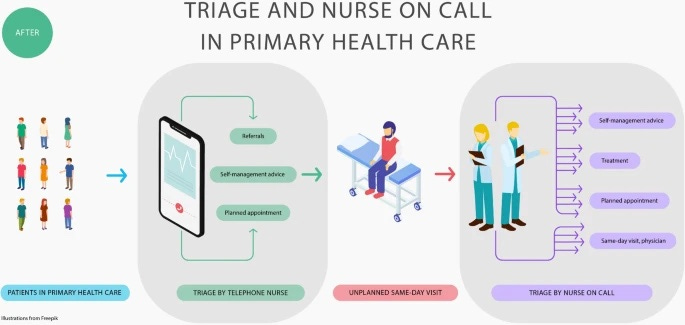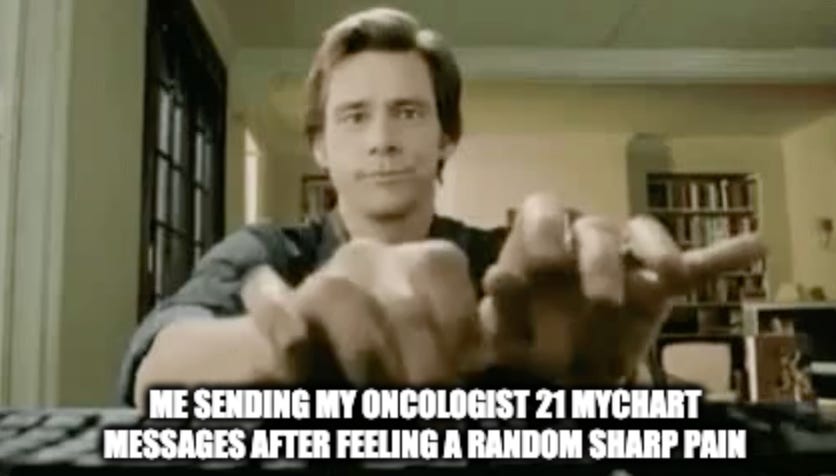How fast should a doctor get back to you?
“Better three hours too soon than a minute too late.”
-William Shakespeare
“Oh, I forgot to ask my doctor something” is a line as old as time itself. This happens within 0.6 seconds of starting the ride back home. So you then decide to call the office. Then you’re probably greeted with a “listen carefully to our menu options.” It’ll be a long day before you get a hold of anyone. Even if your question is “do I put on moisturizer before this ointment?” Thankfully, methods to reach providers for questions or concerns improved over the years.
Any patient deserves to be able to reach their doctor… but how easily?
No one’s found a happy balance yet—here come the 1,000 unread MyChart messages. Let’s dig into the expectations patients should have for contacting their provider as well as what inquiry policies work best.
Today’s TLDR: handling patient questions…
Clearly delegate who’s responsible for various message types on each platform
Have all staff on the same page as to what “urgent” and “non-urgent” means to your practice
For patients: make sure you agree with the clinic’s inquiry and contact policy
Note: I’m choosing to frame this discussion based on outpatient care. I.e. we’ll focus on patients and their doctors at the clinic for under a day. Inpatient medicine is a different beast, and not relevant to the cash pay discussion today. Scheduling dynamics will also be a separate article.
You can call me anytime… or can you?
Many an office worker grumbles, “this meeting could have been an email.” And when it comes to medical practice, short-form comms can save time on both the patient’s and doctor’s part. A quick message might even accelerate some much-needed visits. Of course, that might be taken to an extreme, and in turn the MyChart inbox gets out of hand. Other clinics may triage their messages with a medical assistant. Patients shouldn’t take that as disrespect—MAs and nurses can field simpler questions. What’s “simpler” or not, however, depends on the specialty. If your question/concern is complicated or urgent, any decent office should route you to whoever’s on call. Keep in mind that providers have to juggle inquiry response speed with giving high-quality care to the patient right in front of them.

Most offices also have some after-hours answering service. Obviously, this is great for patients. Medical problems don’t follow a 9-5 schedule. But it’s easy to inundate that channel with non-urgent questions. So… what’s considered “urgent?” Although that’s a can of worms for many a practice, I’ll explain how our clinic thinks about it.
What about cash pay clinics?
Since patients are giving their hard-earned cash for you, a few things change:
Patients expect their treating provider (not necessarily other staff) to return messages promptly. See details below on what “promptly” should be
Your phone service better not have a labyrinth of a switchboard, unless it’s relevant to your specialty
Within a day, if nothing else, someone must confirm that the office received the patient’s message
It’s hard to believe a world existed where patients could *gasp* reach their physician directly. That was before healthcare facilities gained more administrative bloat than layers of a wedding cake. Although several practice structures could use some Ozempic, having boundaries matters. The doctors need to be doctoring, not answering phone calls that other staff are 100% equipped to handle. It’s no secret that established patients wait for a while to have their questions answered. Doctors are sick of it too—believe it not, they want to help you. Some offices, especially in the primary care space, attempt to marry old tech (e.g. phone, email, fax) with newer tech (e.g. EMRs, AI-generated intake. video) to efficiently channel inquiries.

Current methods
Since we have electronic medical records now, patients can rip an instant message to their care team anytime. That being said, don’t squeeze in a free consult through an avalanche of MyChart messages. It’s the same deal when texting your crush. Showering them with texts asking if they got your last message wins no one over. However, the flexibility to send your doctor or care team a message is what matters. It’s the provider’s role to set proper boundaries, not the patient.
Let me walk you through how our clinic handles inquiries:
*Keep in mind that we’re a dermatology office—some of this context is skin-specific*
Our framework may not suit all clinics (either cash pay or insurance-based), but you can use it to learn if a) this works great for your office, b) this is useless to you, or c) this is helpful after making some adjustments.
Our general guidelines:
We give patients an after-hours cell phone number to call if they have any urgent questions/concerns (for our clinic’s standards). To which you ask, ”won’t the patients blow up my phone?” In reality, a handful will. Respond to them, but be firm with your boundaries. Otherwise, most patients dialing the after-hours cell for our practice do have concerns necessitating a <24-hour turnaround. It’s just part of the doctoring job.
Set clear expectations for the patients sending lots of messages. State a concrete number of allowed non-urgent contact attempts and stick with it.
Double-check that all recent patient inquiries (for a given week) are resolved. Aim to contact the patient back if they were supposed to respond to an earlier follow-up.
Answering inquiries may appear simple in a vacuum. But they’re no joke when they pile up. Let these guidelines help you swim upstream and focus on what matters: patients. Reach us on our Substack or contact me directly @caretocash on x.com to address questions for your practice or help search for doctors who care about you.








